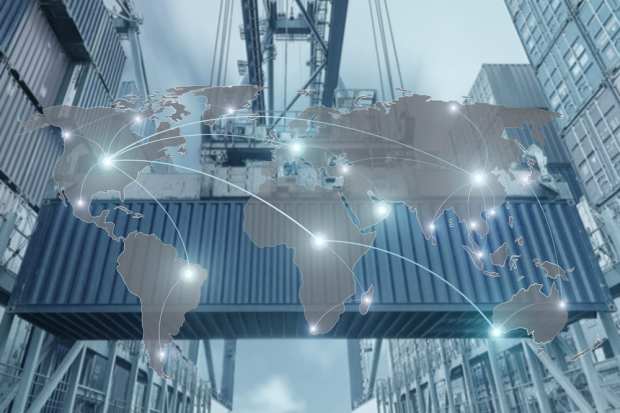Shifting Logistics To The Center Of Trade Finance

The Asian Development Bank‘s estimation of a $1.5 trillion gap in available trade finance is both concerning (particularly to small and medium-sized businesses [SMBs] struggling to access financing to expand across borders), as well as enticing to technology innovators seeking ways to fill a portion of that demand.
Though FinTech service providers continue to roll out new products relying on APIs, blockchain and other emerging technologies as part of their efforts to broaden access to trade finance, there often remains one constant across their strategies: Lenders are the focal point of trade finance processes.
When lending money to a business, a global financial institution (FI) is the entity one may naturally assume should take the lead. However, in the world of trade finance, where so many participants — including importers, exporters, insurance firms, logistics providers, customs agencies, FIs and more — join in, there is opportunity for other players to step into the middle of the trade finance web.
That’s the concept that led ConsolFreight to introduce a new trade finance business model, one in which freight forwarders, not banks, stand at the center.
“This process is multidimensional, and having the banks in the middle doesn’t make much sense,” said Alejandro Gutierrez, ConsolFreight’s chief strategy officer, in a recent interview with PYMNTS. “Banks are not experts in international trade.”
A New Approach To Underwriting
Gutierrez explained that this business model could support expanded access to trade finance, particularly for SMBs. Banks continue to deploy their traditional risk analysis models for SMBs seeking trade finance products, and — as is the case with other areas of small business lending — don’t always fit into a lender’s risk portfolio.
FIs apply their underwriting processes to the participants involved in global trade, providing trade finance to the businesses that represent minimal risk. Yet, there’s another way to underwrite trade finance.
“If we swap out that process and incorporate technology, instead of focusing on the parties involved, we put a bigger weight on the commodity that’s going to be transacted,” Gutierrez said. “That’s going to generate some inclusion.”
Freight forwarders are in an ideal position to understand whether a business — even if it’s a small company — is able to fulfill its end of an international trade agreement, he explained.
Finding A Different Path
What’s important to note in the development of a new business model for facilitating trade finance is that the current, traditional model continues to function all around the world. However, the $1.5 trillion trade finance gap remains.
“It’s not that these processes don’t work,” said Gutierrez. “The process works as is. It’s that the process can improve and be more inclusive.”
Considering the size of the trade finance gap, he added, this business model should be considered as one option of several to meet demand. That’s particularly true as the volume of FinTech firms stepping into the market with their own products and services grows. No one service provider is going to address the entire gap, and more FinTech firms are introducing niche services that can address particular industries, or overhaul one particular process within the broader trade finance landscape.
While the trade finance landscape evolves, so too is international trade.
The face of the freight forwarder is in flux, with large carriers stepping into the market with their own freight forwarding services, and newer players disrupting the industry as well. As coordinators of the shipment of goods, freight forwarders are facing an existential crisis, one that will turn these companies “into something different,” or cause them to “potentially disappear,” Gutierrez said.
One way to preserve the freight forwarder’s role in the market of tomorrow, he explained, is to “change the role of the freight [forwarders] from just coordinators of international transport into mitigators of risk for financial entities and companies — and also into business enablers for their customers.”
Embracing Transformation
One of the biggest drivers of change in the trade finance and international trade spaces is data. On one hand, Gutierrez noted, digitization has broadened corporate and lender access to valuable data to make more informed, accurate decisions. On the other hand, many businesses don’t know how to properly manage and analyze that data.
By positioning freight forwarders at the center of trade finance dealings, this business model can also support digitization of these logistics players, many of which are SMBs struggling to invest in technology, Gutierrez explained. This, in turn, provides the rest of the trade finance community with valuable data and insight, too.
Though he sees benefits for all parties involved, Gutierrez acknowledged that the adoption of an entirely new business model (let alone a new product) will face many obstacles, particularly with ConsolFreight’s new platform operating on blockchain technology — a tool that can lack trust, he noted.
However, global trade is changing. For service providers to meet the expanding, unmet demand for trade finance, industry participants must be proactive in steering the direction of that disruption.
“We want to change a process that has been unchanged for decades,” he said. “It’s going to be a journey, a transformational journey, and we are starting right now.”
